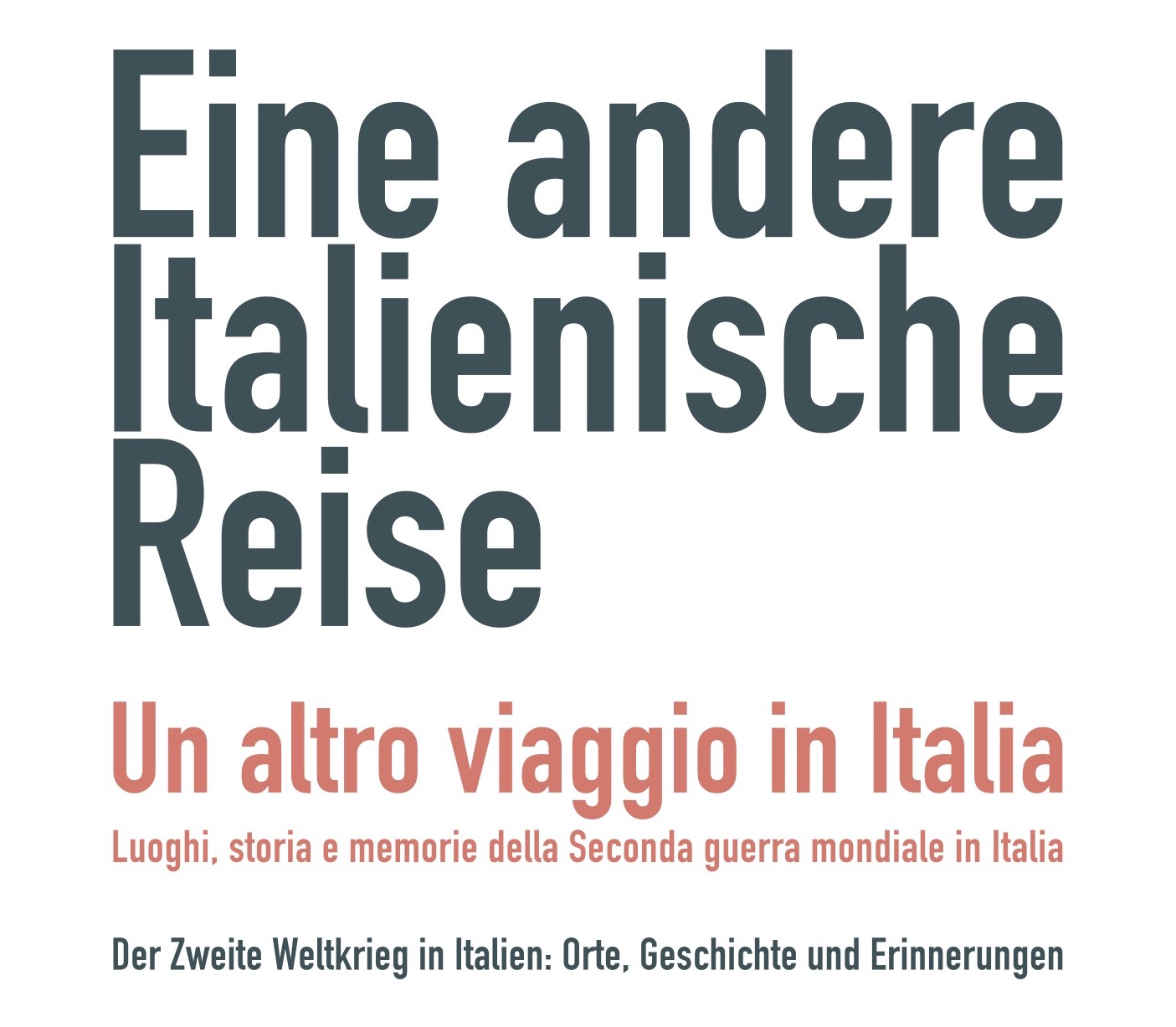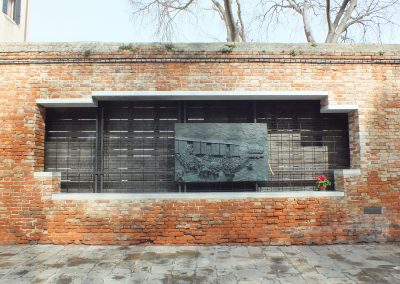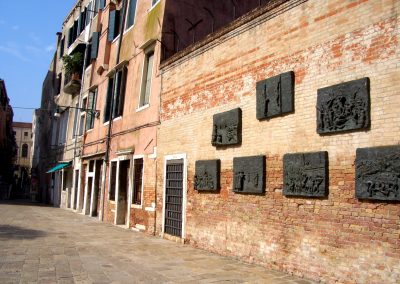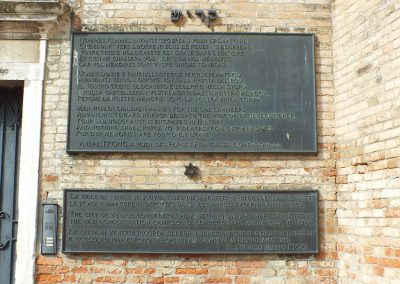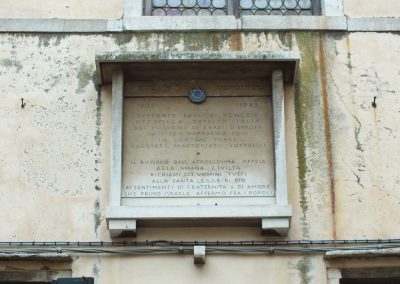Credits: Paola Boccalatte
Where are we?
We are at the Holocaust Monument of Venice
Created by Lithuanian artist Arbit Blatas in 1980, the seven bronze bas-reliefs commemorate the victims of the deportation from the Venice Jewish district in 1943.
The decrees of November 1943 declared Jews to be ‘foreigners of enemy nationality’ and provided for their arrest and the confiscation of their property. Some escaped to Switzerland and southern Italy, while others were held in the prison of Santa Maria Maggiore and other collection sites before being sent to Fossoli, Bolzano and the Risiera di San Sabba in Trieste.
The arrests and deportations took place mainly between December 1943 and the summer of 1944. On 17th August 1944, 21 guests from the Casa di Riposo Israelitica, a Jewish retirement home, were arrested and sent mostly to Auschwitz-Birkenau, including Rabbi Adolfo Ottolenghi.
246 Venetian Jews were kidnapped and deported between 1943 and 1944, and only eight returned. The names of the victims are commemorated by a plaque in Campo del Ghetto Novo.
On 25th April 1980, the anniversary of Liberation Day, the Holocaust Monument, created by Lithuanian artist Arbit Blatas, was unveiled on the wall of the Ghetto Novo. The work consists of seven bronze panels depicting scenes from the Holocaust. Portraits of those travelling to the camps are faceless, in accordance with the Jewish prohibition on depicting people. The Ghetto Novo is also home to the Jewish Museum of Venice, which tells the story of Venice’s Jews and houses testimonies of Jewish culture and tradition.
Facility or museum: no
Geographic location: Venice, Veneto
